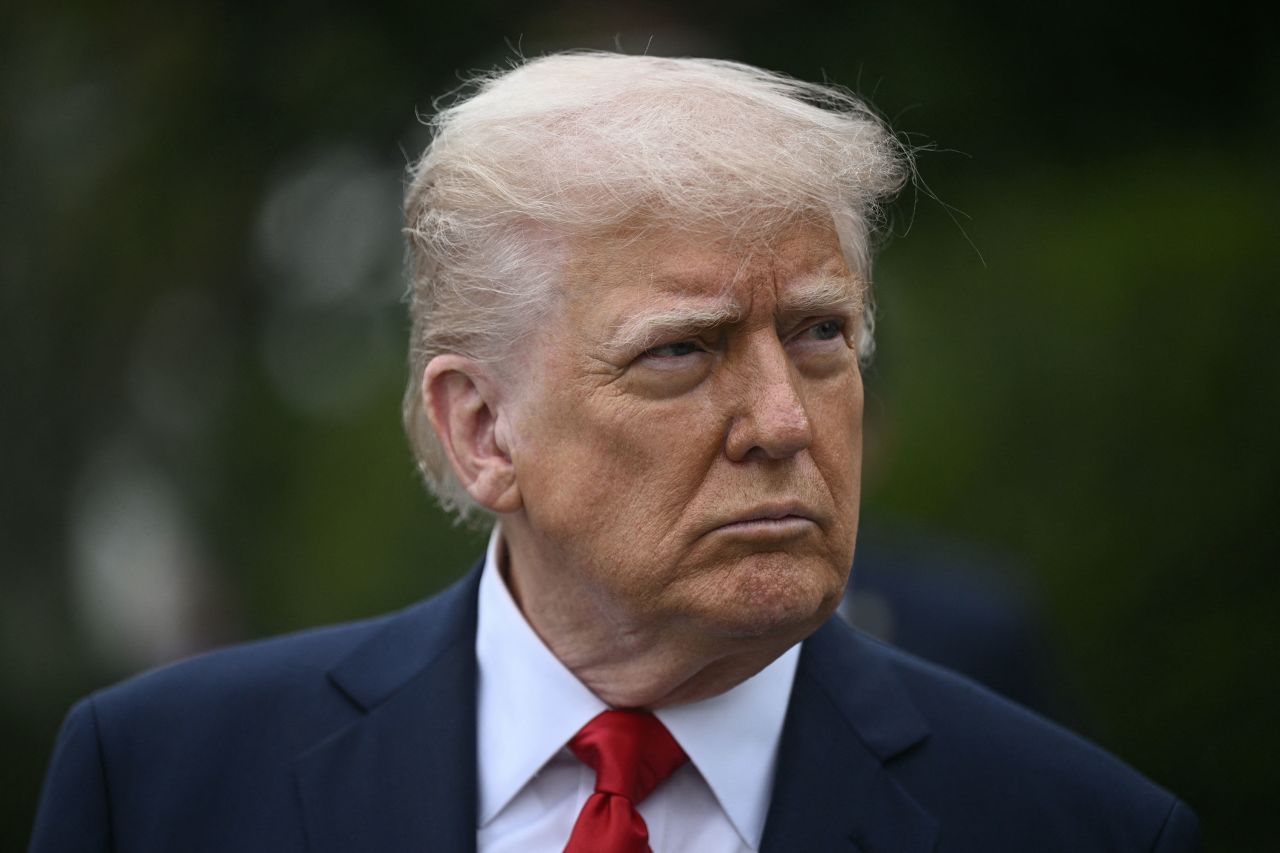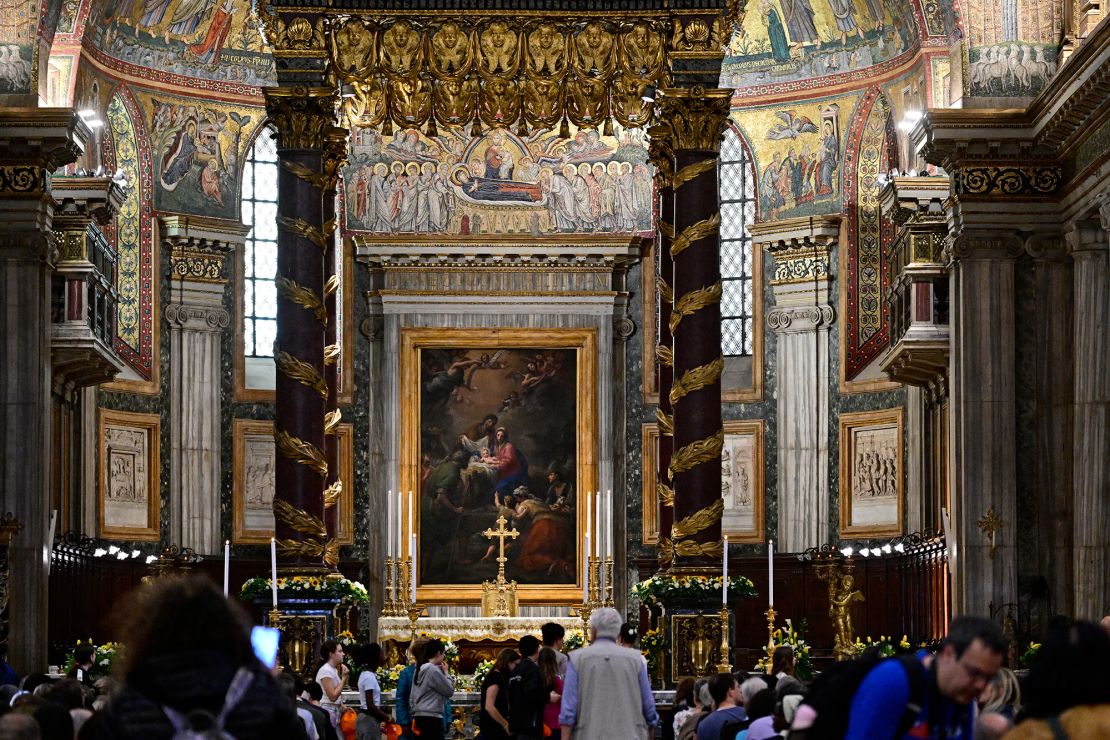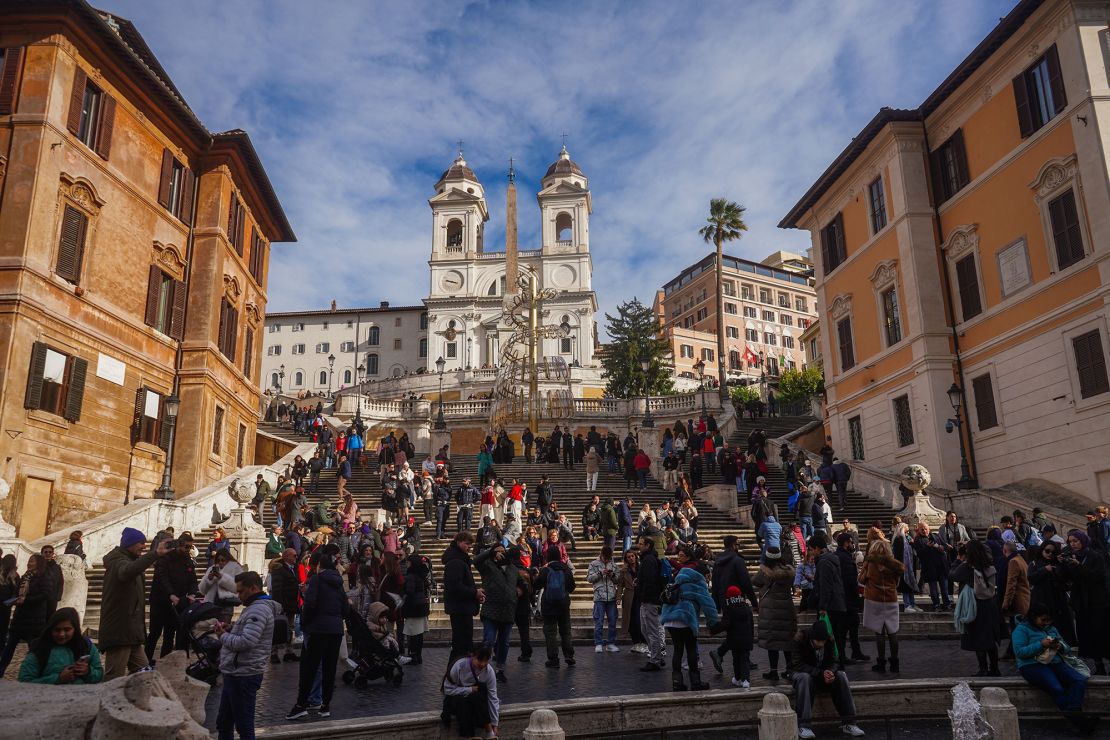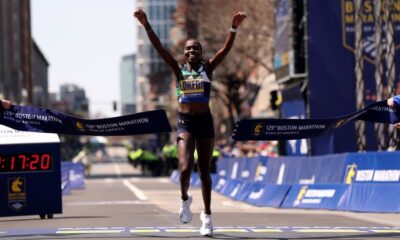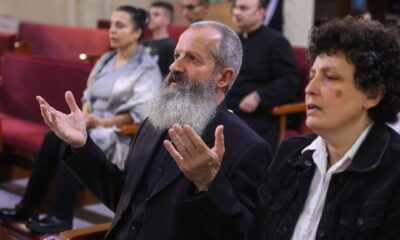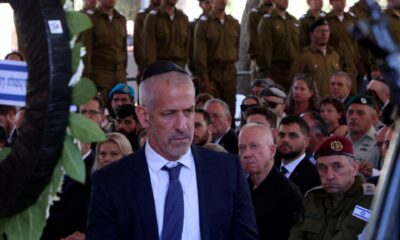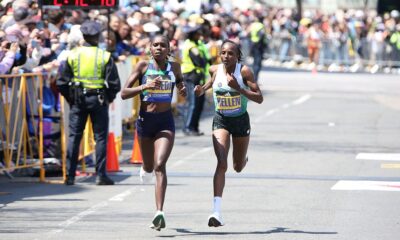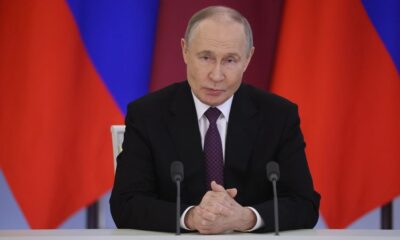CNN
—
The faithful will be flocking to Rome to honor the death of Pope Francis, who died on April 21, with his funeral scheduled for Saturday April 26 at 10 a.m..
Given his relatively liberal policies and habit of phoning up members of the public for a chat, it’s possible that many non-Catholics will want to pay their respects, in addition to the nearly 1.4 billion Catholics around the world.
Foreign visitor numbers in Italy are already reaching all-time highs — and Rome is even fuller than usual this year because of the Vatican Jubilee, which will see an estimated more than 32 million pilgrims crowding in alongside regular visitors, who numbered 37.3 million last year.
That means that making your way to pay your respects may be difficult.
“We will see a huge media presence, much more than for Pope Benedict, since Francis is a current pope,” Mountain Butorac, who leads pilgrimages to Rome and tours of the Vatican as The Catholic Traveler, told CNN prior to the pope’s death. However, he added that he believes the crowd numbers will be similar to those for Benedict’s funeral: “I don’t expect numbers even close to [the funeral of] Pope John Paul II.” Around four million mourners flocked to Rome for the 2005 death of John Paul II.
The conclave — the meeting of cardinals to elect a new pope, usually two or three weeks after the previous pontiff’s death — will “be a big draw for people to come to Rome,” said Butorac, adding that unlike in the case of Benedict, time-strapped mourners may have to choose between traveling to Rome for the funeral or the conclave.
Pope Francis’ funeral is scheduled for Saturday April 26 at 10 a.m.
Before the funeral, there will be a period of lying in state. Francis’ coffin was transferred from his papal residence at the Casa Santa Marta to St. Peter’s Basilica early on Wednesday, April 23.
Following a ceremony inside the basilica, the public will be able to file past the coffin. The basilica will be open until midnight Wednesday, from 7 a.m. to midnight Thursday, and from 7 a.m. to 7 p.m. Friday. At 8 p.m. there will be a ceremony for the closing of the coffin.
The funeral, at 10 a.m. on Saturday, will take place in St. Peter’s Square outside the basilica, and will be open to the public. Tickets are not required — but expect extremely long lines. There will be a final Commendation and Valediction, before Francis’ coffin is taken inside St. Peter’s Basilica for the remainder of the service.
His body will then be taken to Rome’s Basilica of Santa Maria Maggiore, just over two miles east of St. Peter’s, for burial. The route has not yet been announced.
The religious elements of a pope’s funeral are laid out in the “Ordo Exsequiarum Romani Pontificis” (Latin for “Funeral Rites for the Roman Pontiff”). However, popes can still weigh in on plans, as Francis did when he approved an updated edition of the liturgical book in 2024. Francis wrote in his 2025 autobiography, “Hope,” that the proposed funeral was “excessive” and that he arranged to “lighten” it. He also chose his burial place, and will be the first pope in over a century to be laid to rest outside the Vatican. He regularly worshiped at Santa Maria Maggiore, and last made a surprise visit there on April 12.
Vatican rules stipulate that the pope must be buried between the fourth and sixth day after his death. The funeral then officially triggers nine days of mourning known as the “Novendiales,” which will see masses for Pope Francis held daily until May 4.
During this period, cardinals from across the world will be arriving in Rome, ready for the conclave, the date for which has not yet been announced.
“Every cardinal has a titular church here, and so usually two days before the conclave begins, they will have a Mass at their church,” said Butorac.
“The day before the conclave, there is a Mass in St. Peter’s Basilica. This is also open to the public. All the cardinals will be there. After this, they head into the Sistine Chapel, not to be seen in public again until the election of the pope.”
The conclave to elect the next pope can start no sooner than 15 days after the previous pope’s death (which would be May 6), though the exact date will be determined by cardinals in the days ahead.
During the conclave, while the cardinals are secreted away in the Sistine Chapel, crowds gather in St. Peter’s Square to pray, hoping to be there when they see white smoke emerging from the Sistine Chapel, meaning that a new pope has been chosen.
Shortly afterwards, the newly elected pope will greet the crowds in the square from his balcony.
You don’t need a ticket to be in the square, but you will need to pass through security to access it, said Butorac.
For those who wish to witness it, on day one of the conclave, there is just one vote, in the evening. On the following days, there are four votes: two in the morning, two in the late afternoon. Twice a day, until a pope has been elected, the ballots will be burned. Black smoke emerging from the Sistine Chapel means no pope has been chosen. White means there is a new pope.
The pattern of voting continues each day with a break every five days until a new Bishop of Rome is selected. Once that happens, the ballots are immediately burned to produce the white smoke.
“The times are usually public, so people know when to be in the square,” said Butorac. “There are also no seats — so expect to stand for hours.” The voting can take hours, so be prepared to wait.
Rome has two international airports. Fiumicino, around 17 miles (27 kilometers) southwest of the city center, is Italy’s busiest airport and the hub for non-European airlines.
Ciampino, southeast of the city, is much smaller and closer to central Rome. It currently serves budget airlines with intra-European routes as well as two destinations in Morocco.
From Fiumicino, the Leonardo Express train departs every 15 minutes for Termini station in the city center. Alternatively, taxis charge a fixed rate of 55 euros ($58) to destinations within the city walls. Buses to Termini take 50 minutes and cost 9.90 euros ($10.40) return.
From Ciampino, a taxi costs a fixed 40 euros ($42), or buses to Termini take 40 minutes and cost 9.90 euros.
While flying into Rome is obviously direct, it’s worth considering flying into other major Italian airports, too. Rome’s Termini station is a hub on Italy’s high-speed railway line, meaning Milan is just over three hours away, and Naples around an hour.
Rome will be incredibly busy, so it makes sense to stay near St. Peter’s — though be aware that hotels are already heavily booked throughout 2025 because of the Jubilee. Vatican City sits on the west side of the Tiber, across the river from the historical center of Rome. The rione (district) of Prati is right above it, and is your best bet, accommodation-wise. Campo Marzio, in the historic center, is just across the water — anywhere near Campo de’ Fiori or Piazza Navona is also an easy walk to the Vatican.
Not finding anything? The nearest metro stop to the Vatican is at Ottaviano. Stay anywhere around Piazza di Spagna (the Spanish Steps) or the cheaper areas around Piazza della Repubblica and Termini train station, and you’ll be just a few minutes away by metro.
While many hotels appear to have hiked room rates over the next few days, there are some with availability at more reasonable prices. Checking Booking.com on Tuesday after the funeral and lying in state was announced, there were various two- and three-star hotels around Termini for around 500 euros ($574) for three nights from Wednesday to Saturday. This isn’t the time to go all out with a five star — the luxury Bvlgari hotel, for example, which is within walking distance from the Vatican, was selling rooms for the same dates (three nights) for 8,310 euros ($9,539).
If you’re looking for just one night and the pickings are looking slim, it could work out as more affordable to stay longer. For example, Hotel Lancelot, a family-owned three-star near the Colosseum, has implemented a three-day minimum stay during the lying-in-state and funeral period; however, it has not raised its reasonable rates. A single room for three nights is 420 euros ($482) as of Tuesday.
Vatican City is one of the most popular places to visit on a Rome trip, but this is a time when it shuts down its tourism operations and returns the buildings to what they were built for. The Sistine Chapel, for example, will hold the conclave, while St. Peter’s will be used for the lying in state. The museums will also be closed on Saturday 26 April, and all tours of the Vatican Gardens and the Necropolis of the Via Triumphalis are suspended, according to a statement on the Musei Vaticani website.
Instead, if you have time to sightsee, you’ll need to leave Vatican City — but there are still plenty of sites with papal links in Rome. A 10-minute walk from St. Peter’s Square is the colossal Castel Sant’Angelo, originally built as the mausoleum of the emperor Hadrian, and then used as a papal fortress. It was here that Pope Clement VII holed up during the Sack of Rome in 1527, eventually escaping the city.
If you’re here to pay respects to Francis, you’ll probably want to spend some time in church. Luckily, Rome’s basilicas are museums in their own right, so you’ll be sightseeing as you go. Prime amongst them are the city’s three other “papal basilicas” — which rank just below St. Peter’s for importance to the Catholic Church. San Giovanni in Laterano, Santa Maria Maggiore and San Paolo Fuori le Mura each have a “porta santa” (holy door), and a papal altar. The latter, at the end of the increasingly trendy Via Ostiense, is said to be the resting place of the apostle St. Paul.
Be aware that as the resting place of the pope, Santa Maria Maggiore will likely be subject to visiting restrictions around the date of the funeral. No information has been announced as of yet.
If you want to mix in some Michelangelo, there are several options in lieu of St. Peter’s.
His formidable Moses statue in San Pietro in Vincoli, a church in Monti, is a match for the Pietà in St. Peter’s — and in fact it was designed for the funerary monument of Pope Julius II, an ill-fated project that Michelangelo only completed after the death of Julius.
The spectacular church of Santa Maria degli Angeli is a ruined Roman bath that Michelangelo redesigned as a church — while his Risen Christ statue stands in Santa Maria Sopra Minerva, the church behind the Pantheon.
Two of the most spectacular papal sites are located outside the capital. Castel Gandolfo was the pope’s summer residence from 1596 until Francis wound it down, preferring to live more simply. Since 2016, you can visit the Palazzo Apostolico, or Palazzo Papale (papal palace) — as well as its beautiful gardens with spectacular views over Lake Albano. It’s currently open to the public daily (check the website for opening times) although it will be closed on Saturday 26 April as a sign of mourning.
In Viterbo, around 100 minutes by train north of Rome, is the Palazzo dei Papi, or Palace of the Popes. From 1257 to 1281, the Curia was moved here from Rome, and a suitably grand papal palace was built for the occasion — which is open to visitors today. The city carried on being a favorite escape for popes even when they were based back in Rome — one 15th century pontiff even added a bathhouse to take full advantage of Viterbo’s famous thermal waters.



